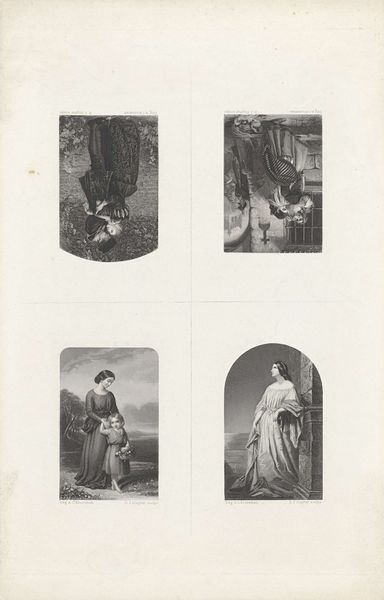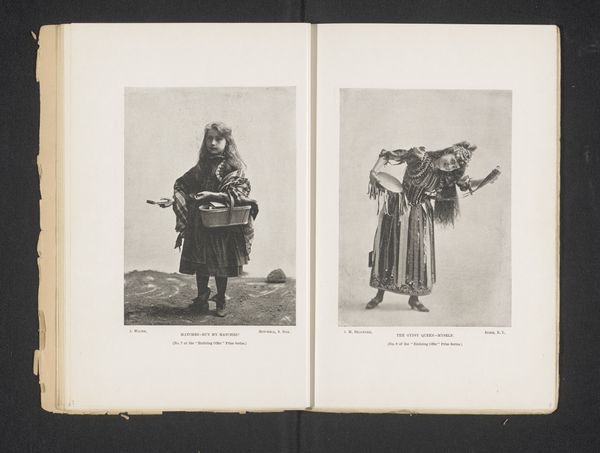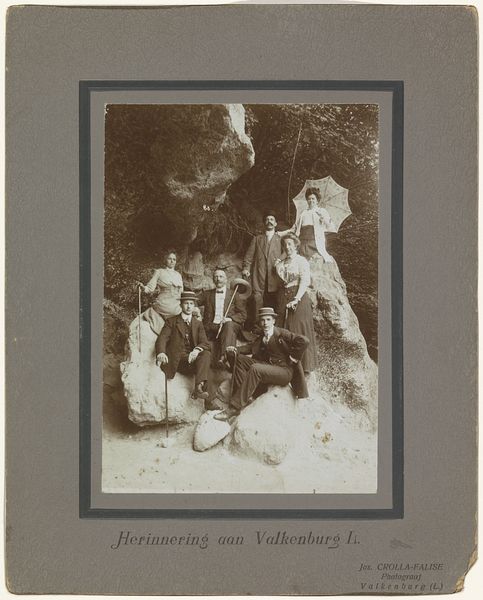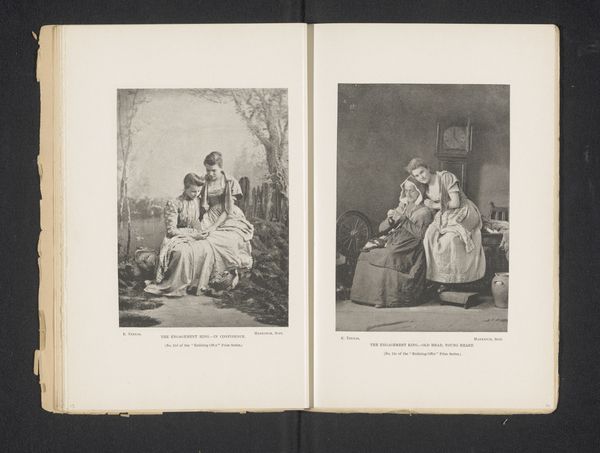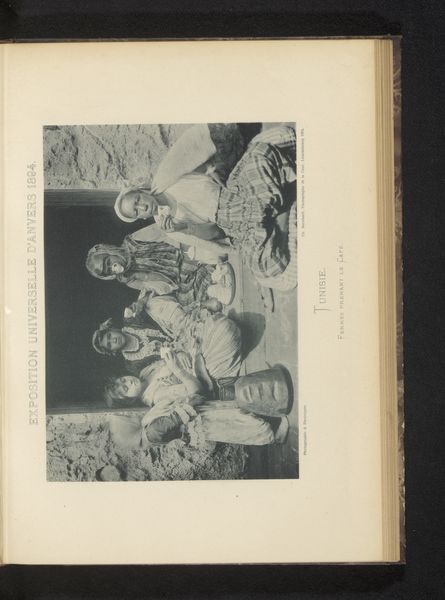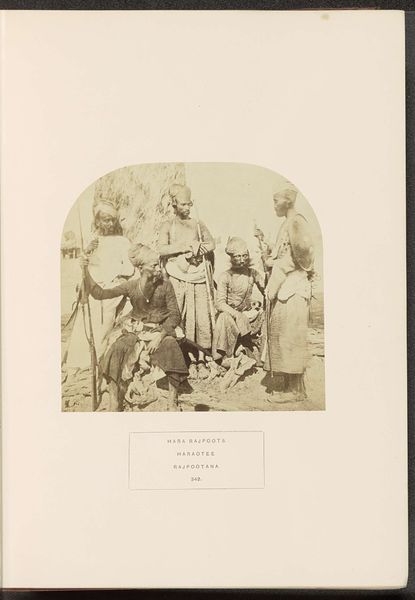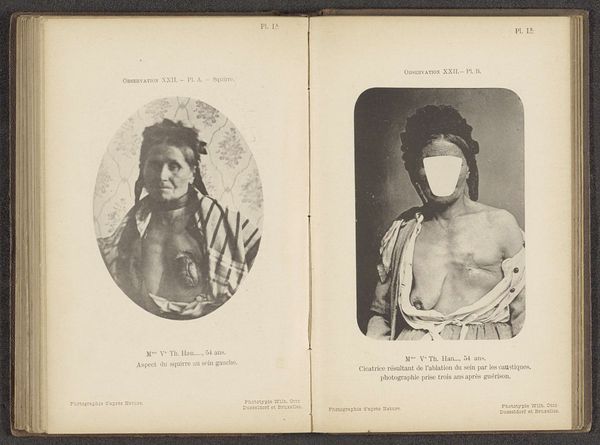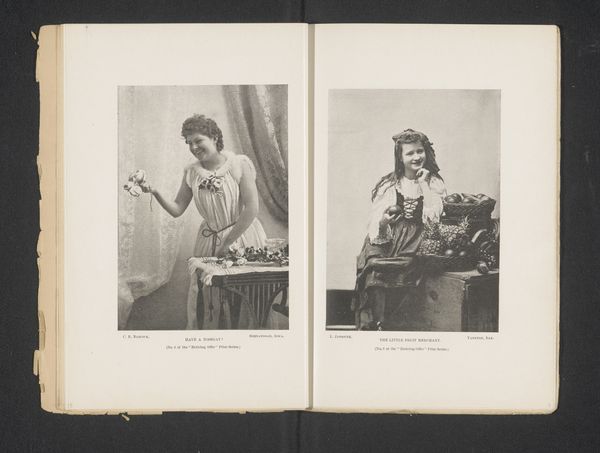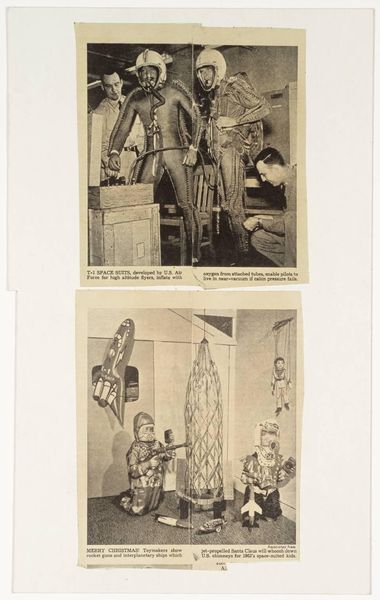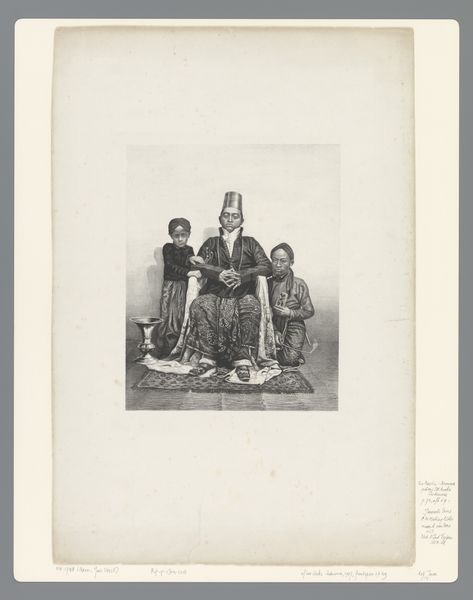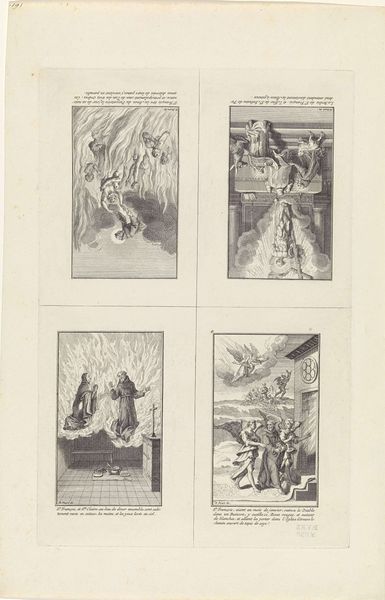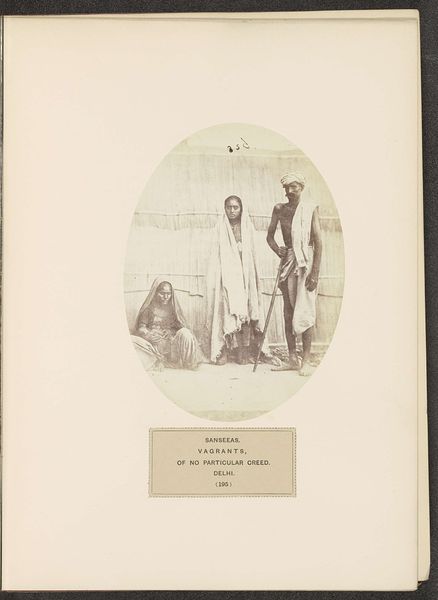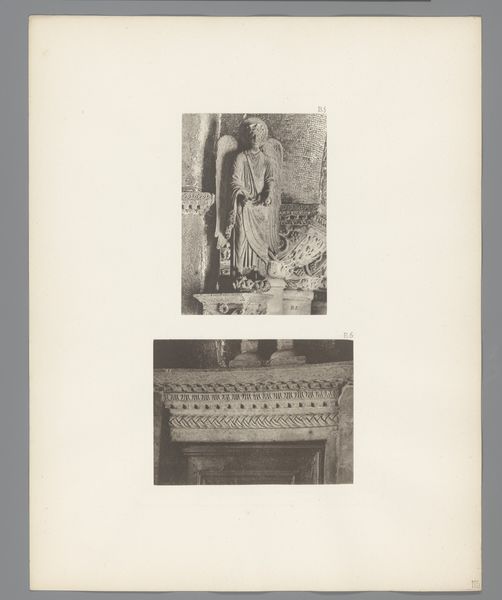
Vier portretten van onbekende vrouwen, een bediende en een eunuch met kind te Mekka en Djedda before 1888
0:00
0:00
print, photography
#
portrait
#
african-art
# print
#
photography
#
orientalism
#
genre-painting
Dimensions: height 137 mm, width 100 mm
Copyright: Rijks Museum: Open Domain
These four portraits were made by Christiaan Snouck Hurgronje using photography, sometime between 1884 and 1885, in Mecca and Jeddah. As a mode of image-making, photography has always been tied to production, labor, and consumption. Photography in the 19th century was a chemical process, often involving a collaboration between the photographer, who mixed the chemicals and captured the image, and the sitter who sat still for extended periods, and whose image would be consumed as a commodity. These images were made by a Western photographer of people in Mecca and Jeddah. This involved staging portraits and using a visual language rooted in colonial power dynamics. The sitters' clothes and adornments, which denote social status, are documented. The photograph attempts to capture a moment in time, and also something about the people, but also reveals the nature of the photographic process itself and its ties to politics. Understanding the labor, social context, and power dynamics inherent in the making of this photograph, challenges the traditional divide between photography as fine art, and photography as a tool of colonial documentation.
Comments
No comments
Be the first to comment and join the conversation on the ultimate creative platform.
